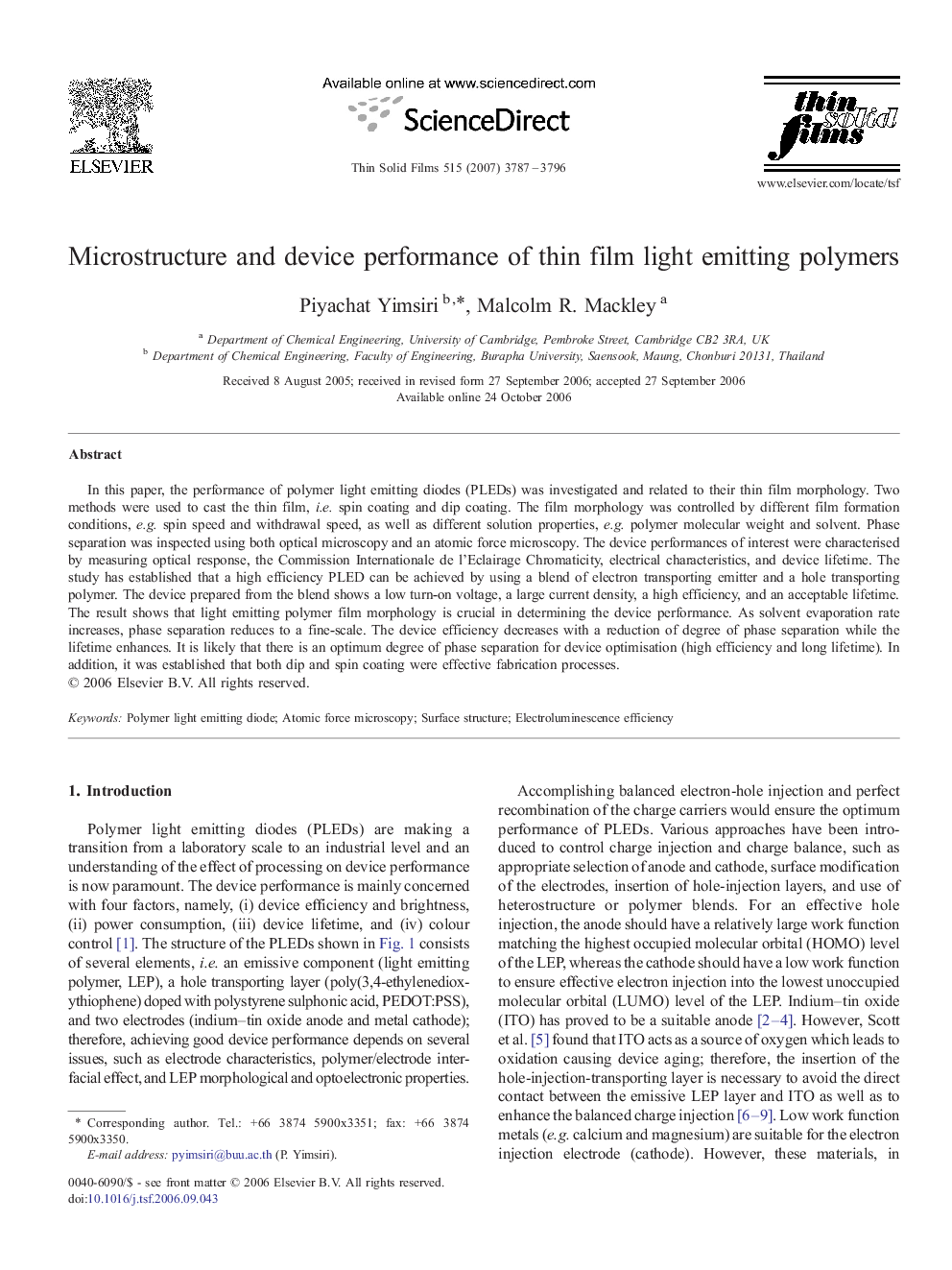| Article ID | Journal | Published Year | Pages | File Type |
|---|---|---|---|---|
| 1673031 | Thin Solid Films | 2007 | 10 Pages |
In this paper, the performance of polymer light emitting diodes (PLEDs) was investigated and related to their thin film morphology. Two methods were used to cast the thin film, i.e. spin coating and dip coating. The film morphology was controlled by different film formation conditions, e.g. spin speed and withdrawal speed, as well as different solution properties, e.g. polymer molecular weight and solvent. Phase separation was inspected using both optical microscopy and an atomic force microscopy. The device performances of interest were characterised by measuring optical response, the Commission Internationale de l'Eclairage Chromaticity, electrical characteristics, and device lifetime. The study has established that a high efficiency PLED can be achieved by using a blend of electron transporting emitter and a hole transporting polymer. The device prepared from the blend shows a low turn-on voltage, a large current density, a high efficiency, and an acceptable lifetime. The result shows that light emitting polymer film morphology is crucial in determining the device performance. As solvent evaporation rate increases, phase separation reduces to a fine-scale. The device efficiency decreases with a reduction of degree of phase separation while the lifetime enhances. It is likely that there is an optimum degree of phase separation for device optimisation (high efficiency and long lifetime). In addition, it was established that both dip and spin coating were effective fabrication processes.
